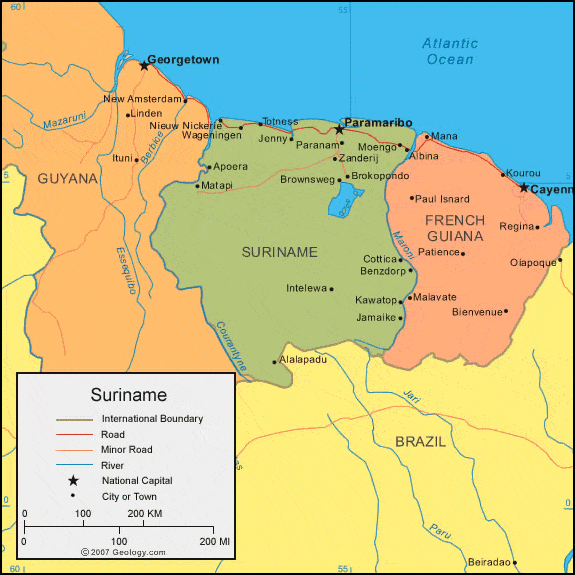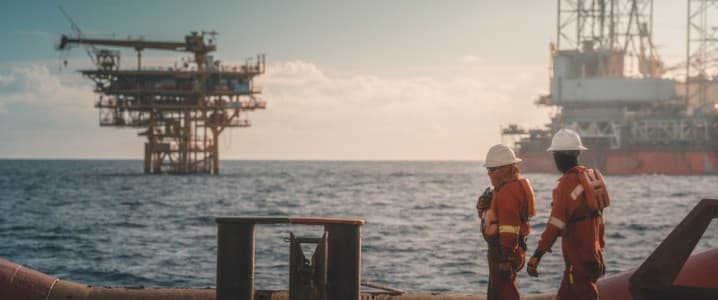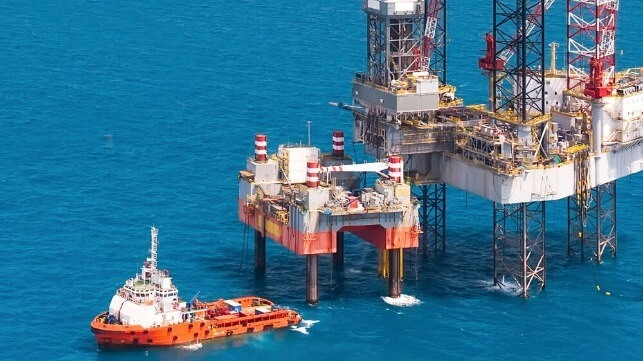Suriname's recent offshore oil discoveries have attracted significant investment from major international oil companies.
TotalEnergies is leading the development of Suriname's Block 58, with a focus on low-carbon oil production.
Suriname's government is committed to responsible fiscal management of its oil resources, ensuring long-term economic benefits for the country.

The small Caribbean country of Guyana has caught most of the world’s attention for the rapid development of its oil and gas resources, but its lesser-known neighbour – Suriname, is also a rising star in the world of oil and gas. Several oil majors have signed agreements to expand exploration in Suriname and expect to see huge oil and gas output as early as the 2030s. The fossil fuel development in Guyana and Suriname is expected to propel the Caribbean region to become a world leader in oil and gas in the coming decades.
Suriname is South America’s smallest country in terms of both size and population, however, it has significant potential to become a major international energy power and grow its economy substantially in the coming years. Until recently, Suriname’s oil production was dominated by state-owned Staatsolie’s onshore activities, with an output of around 17,000 bpd. However, offshore oil discoveries made in late 2019 and 2020 have helped garner the interest of several oil majors.
In 2021, Suriname’s government licensed offshore blocks for the first time, which resulted in the signing of production sharing contracts (PSC) with Chevron and QatarEnergy. In May 2023, Suriname finalised a 30-year PSC between Staatsolie, TotalEnergies, and QatarEnergy for the two neighbouring blocks 6 and 8. Staatsolie holds a 40 percent share in the blocks through its subsidiary Paradise Oil Company. The first phase of exploration is expected to take around six years.
As seen in the case of Guyana, most international oil majors are looking to solidify the future of their oil and gas activities. Several of the world’s most famous oilfields are gradually being depleted, following decades of production. In addition, many existing oil operations are extremely carbon-intensive, at a time when governments are putting pressure on companies to decarbonise. Numerous oil and gas companies are, therefore, pursuing oil projects in emerging oil regions, such as Africa and the Caribbean. Developing operations in these regions could ensure the longevity of their crude production, as multiple countries have been found to hold massive untapped oil reserves. It also provides them with an opportunity to develop lower-carbon oil operations.
In October, France’s TotalEnergies announced $10.5 million in investment to develop a giant oil project in Block 58 around 140 km off the coast of Suriname. The construction and installation phases are expected to take around four years, with the potential for the oilfield to open around 2028. Suriname’s offshore Gran Morgu field has estimated recoverable resources of 700 million barrels of oil equivalent. The field is adjacent to Exxon Mobil's giant 11-billion-barrel discovery in neighbouring Guyana.
TotalEnergies aims to decarbonise operations in Block 58 by incorporating new technologies into its activities. For example, it will use an all-electric floating production, storage, and offloading (FPSO) unit, optimised power usage with a waste heat recovery unit, and optimised water cooling for improved efficiency. The firm has also stated it will not flare gas and will reinject associated gas into the reservoirs. In addition, it will install a permanent methane detection and monitoring system to spot leaks.
Suriname and neighbouring Guyana could provide competitive LNG supplies from early next decade, according to a recent report from Wood Mackenzie. The report states that two countries could deliver up to 12 million metric tonnes per annum of LNG by the 2030s. Guyana's Haimara cluster and Suriname's Block 52 (Sloanea) are estimated together to hold 13 trillion cubic feet of discovered non-associated gas.
In September, Staatsolie signed a memorandum of understanding (MoU) with Brazilian state-owned oil and gas giant Petrobras to deepen their energy cooperation. The two powers are expected to work together in the exploration and production of hydrocarbons, carbon capture and storage, renewable energy, the exchange of knowledge and expertise, and contingency response planning and execution. Meanwhile, this November, Norway’s subsea services provider Argeo announced it had entered into an eight-year data agreement with Staatsolie, for the acquisition, processing, and sales of multi-client data in Suriname.
Suriname expects its oil and gas industry to grow rapidly thanks to impressive discoveries in recent years and several new deals with international oil majors. Staatsolie believes Suriname’s new oil activities could bring in as much as $26 billion once developed. However, in October, Suriname’s Minister of Finance and Planning of Suriname, Stanley Raghoebarsing, stated that the country would not be borrowing more money against future oil production. Raghoebarsing said the country is not considering loans that are guaranteed by those revenues. He stated, “In no way do we want to pre-sell oil that we still have to lift, and collateralise that for easy money that will burden the next generation.”
By Felicity Bradstock for Oilprice.com

| Suriname is located in northern South America. Suriname is bordered by the Atlantic Ocean to the north, French Guiana to the east, Guyana to the west, and Brazil to the south. |


